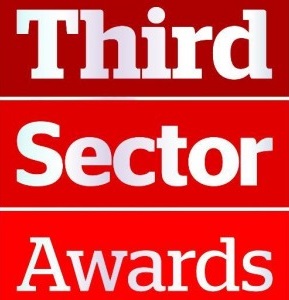“theory of change is an on-going process of reflection to explore change and how it happens – and what that means for the part we play in a particular context, sector and/or group of people” (Comic Relief)
Table of Contents
Theory of Change (TOC)
Thinking about Theory of Change (TOC) can often conjure up images of complex and complicated drawings, lines stretching across the page making connections across multiple areas, and generally looking like an indecipherable secret message. However, it should not be that complicated or confusing. The purpose of a good TOC is for anyone, from any organisation to be able to look at your visualisation and understand what you think, why you think it, and how you think certain actions will produce a desired change in a particular context.

Theory of change as an approach to strategic planning
Theory of change is as much a tool for thinking about change and impact, but also a mind-set or approach to strategic planning at different organisational levels – whether it be thinking about organisational, programmatic or project impact. While TOCs are a lot about plotting strategies for impact and change, they also tell us about much more than just what activities an organisation is planning. This is the case because in communicating how an organisation thinks change will happen, they also communicate organisational philosophies, beliefs and assumptions about the world we work in and, ultimately, whether we can adapt to the contexts we operate in.
Context is key
A key advantage of developing TOC thinking within an organisation is therefore that it forces us to consider the context in which we work. A TOC would not be complete without an analysis of context, as it requires a consideration of how change happens at different levels. The link to context is also why a TOC should be a living document that is regularly reviewed, simply because contexts are constantly changing.
“Theory of change thinking then is viewed as encouraging a broader view of change beyond the immediate programme that encompasses the realities of the context – social, political, technical and environmental.” (Isabel Vogel)
Thinking about context when adopting a TOC equips organisations with the tools and mind-set to go beyond technocratic and linear responses to change. Instead, it pushes us to think about more non-linear and iterative responses to dynamic contexts. NGO work is inherently complex amidst political and social changes and “theory of change thinking is viewed as one approach to help people deal positively with the challenges of complexity” (Vogel).
COVID-19 as a period of reflection
“Crises — while challenging — open windows of opportunity for change. In times of upheaval, people are more likely to question the status quo and to consider different ways of doing things.” (Vivian Tseng)
At this unprecedented time, many of us want to prioritise acting against the pandemic. However, there have also been calls for seeing the current situation as a period for self-reflection and taking the time to do the things we normally do not get time to do. This is in line with the belief that “[in]nvariably, understanding and catering to your new context requires ring-fencing time and space for introspection, self-reflection, expanding your repertoire, and trying out new approaches.”
Could this be extended to the organisational level, allowing organisations the opportunity, time and space to reflect on their own theories of change? As stated previously, TOC thinking means regular reflection about the context in which you work. As we recognise that all of our contexts will most likely be irrevocably changed by COVID-19, this is perhaps the time to consider this vast change and what it means for future global challenges. Rather than jumping into new projects or adjusting organisational activities, perhaps this is an opportunity to take time to think about how we can respond better in future crises – like the ones we will all face in tackling climate change, violent conflict and systemic racism?
Developing a TOC mind-set takes time
Developing a TOC mind-set takes time and resources. While resources are likely more scarce now than before as a result of the COVID-19 pandemic, what many of us do have is time. And perhaps more than that, we have the impetus to think beyond the current crisis, while acknowledging that we cannot ignore it or possible future crises. Resources can also be minimised through virtual debates, discussions and ‘workshops’ which may allow for more honest reflection and consideration.
“Despite taking often very different starting points, driven by different motivations and using different vocabulary and processes, organisations working in international development and related fields have found theory of change thinking a useful approach for exploring and clarifying their thinking about change and how they contribute to it in a particular context.” (Isabel Vogel)
Follow HAD on Facebook, LinkedIn, Twitter and Instagram
Written by Dr Vanessa Malila
Research & Development Officer





